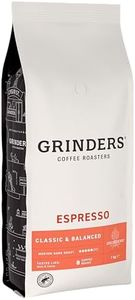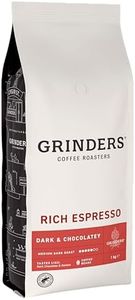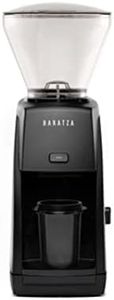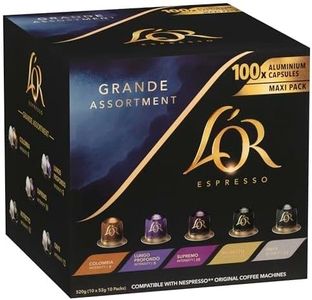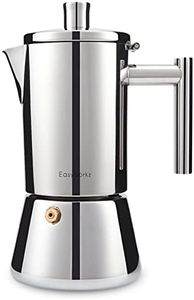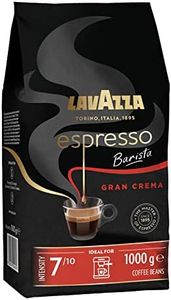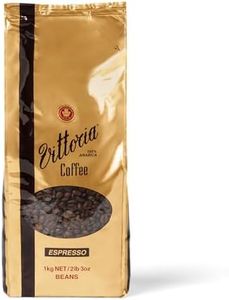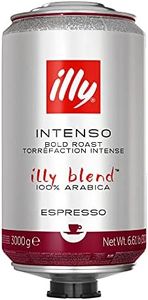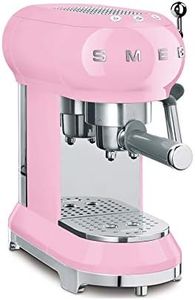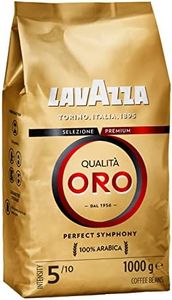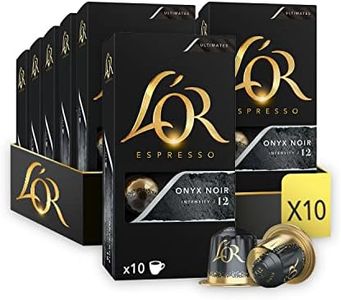We Use CookiesWe use cookies to enhance the security, performance,
functionality and for analytical and promotional activities. By continuing to browse this site you
are agreeing to our privacy policy
10 Best Espresso Coffees
From leading brands and best sellers available on the web.Buying Guide for the Best Espresso Coffees
Selecting the right espresso coffee is both exciting and rewarding, as the choice you make will deeply influence your daily ritual and overall enjoyment. When buying espresso coffee, it’s important to understand a few essential aspects that go beyond just flavor. Your unique taste preferences, desired brew strength, machine compatibility, and brewing habits all play a part in finding the best fit. By understanding the major factors involved, you can make a confident and satisfying choice that elevates your coffee experience at home or in the office.Roast LevelThe roast level refers to how long and how hot the coffee beans have been roasted. It’s important because the roast determines the flavor profile, acidity, and body of the coffee—key aspects of what an espresso will taste like. Roast levels are typically divided into light, medium, and dark. Light roast offers more acidity and a complex flavor, but may be less traditional for espresso. Medium roast balances acidity and body, being versatile and often preferred by those who like both depth and brightness. Dark roast, which is commonly associated with classic espresso, provides a bold, robust, and slightly bitter flavor, perfect if you value richness and crema. Your personal taste should guide your choice: if you like sharper, fruitier flavors, aim for lighter roasts; for smoother and stronger finishes, go darker.
Grind SizeGrind size is how finely or coarsely the coffee beans are ground, and it’s extremely important because it affects how water interacts with coffee during brewing. Espresso requires a very fine grind to create the pressure and extraction needed for that rich, concentrated shot. Coffee for espresso is usually found as ‘espresso grind’ (very fine), but some sellers offer whole beans for you to grind yourself. If you own a grinder, choose whole beans and grind just before brewing for maximum freshness; if not, buy pre-ground but ensure it’s labeled for espresso. Using the wrong grind can lead to watery or overly bitter espresso, so choose according to your equipment and freshness needs.
Coffee Origin and BlendCoffee origin is about where the beans are grown, and it affects the taste, aroma, and intensity of your espresso. Single-origin beans come from a specific region or even farm, offering distinctive, pure flavors like floral, fruity, or nutty notes. Blends mix beans from various places to create balanced flavors and consistent results, typically found in traditional espresso. Choose single-origin if you enjoy exploring unique tastes and complexity; stick to blends if you prefer a consistent, well-rounded classic espresso flavor.
Bean Type: Arabica vs RobustaArabica and Robusta are the two main types of coffee beans, each bringing different traits. Arabica beans are known for their smooth, delicate flavors and a slight acidity, making them more popular among coffee lovers. Robusta beans have a stronger, more bitter flavor and higher caffeine content, which contributes to a thicker crema and more powerful punch in your espresso. Many espressos combine both for balance. If you prefer a milder, more complex cup, look for 100% Arabica; if you want more bite, strength, and crema, choose blends with Robusta.
Freshness and PackagingFreshness matters because coffee loses flavor over time, especially after grinding. Packaging can help lock in freshness, such as vacuum-sealed bags or one-way valve bags that let gas out but prevent air in. Whole beans stay fresher longer than pre-ground coffee, so choose whole if you have a grinder. Check for roasting dates on the package and aim to use your coffee within a few weeks of roasting for the best espresso experience.
